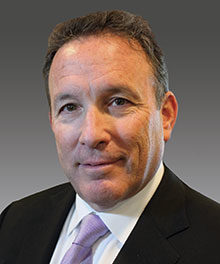The Marcum Retrospective – Part 3

So, to pick up where I left off last week… In two very short years, Marcum became a national firm. From two New York-based offices in 2008, we had expanded into additional offices in Miami, Fort Lauderdale, West Palm Beach, Philadelphia, Boston, Hartford, New Haven, Los Angeles, San Francisco, and Irvine by the end of 2010. We went from two offices to 10 and roughly 450 people to 900, practically overnight.
I had the “easy” part of the job: finding M&A candidates, figuring out if they fit into Marcum, selling them on the virtues of being part of our firm, negotiating the financial aspects of the transaction, etc. Then, I create havoc for the Marcum operations and service teams by going on to the next opportunity while leaving them with the hard work of integration — HR, finance, marketing, IT, operations, as well as our tax, accounting, and assurance service lines. By the beginning of 2011, after four transactions that doubled our size, our people were asking me to slow down, something I wasn’t accustomed to. But I knew they were right and needed time to properly integrate all the new people and offices into Marcum.
Our strategic plan had to evolve in order to give me something to do and to keep building the Firm. I truly believe we do a great job and provide excellent service to our clients, but if I’m honest with myself, I know that no matter how good each of our individual offices is, there’s something that each could use that would make them better. I know that honest self-evaluation is one of the keys to entrepreneurial success. If we had to take a self-imposed break from geographic expansion, why not continue the M&A strategy by trying to make the 10 offices we had better? Part of the strategy to make them better became “tuck-ins” into existing Marcum offices.
2012 brought the additions of Robert Finnegan & Lynah into our Boston office and Konowitz, Kahn & Company into our New Haven office. In 2013, Parent, McLaughlin & Nangle joined us in Boston, Cornerstone Accounting Group joined in New York City, and Wilson-Morgan in Irvine. It wasn’t until 2014 that we expanded into new geography again — Needham, MA (Braver PC) and Greenwich, CT (Thomas E. Finn.) And we were on our way again. Today, Marcum has 42 offices throughout the U.S. as well as 8 international offices. Since 2015, we have merged or acquired the following firms:
- Frost, Ruttenberg & Rothblatt, Chicago, Illinois
- DGLF CPAs, Nashville, Tennessee
- Smart, Devine & Company, Philadelphia, Pennsylvania
- Lautze & Lautze CPAs, San Francisco, California
- RBK, Dublin, Ireland
- Meyers, Harrison & Pia, Connecticut & Maine
- Filomeno & Co., West Hartford, Connecticut
- GBH CPAs, Houston, Texas
- Yarlas, Kaplan, Santilli, Moran, Providence, Rhode Island
- Raffa, Washington, DC
- Silverman Kendall, Horsham, Pennsylvania
- Skoda Minotti, Ohio & Florida
- CPA Consulting Group, PLLC, Nashville, Tennessee
- OGH CPAs, Coral Gables, Florida
- The Abrix Group, L.P., Northbrook, Illinois
- Guyder Hurley, Braintree, Massachusetts
- Dawson, Smith, Purvis & Bassett, Portland, Maine
- Castellano, Korenberg & Co., Hicksville, New York
- GoldsteinPoole, LLC, Fort Lauderdale, Florida
- BWTP, St. Louis, Missouri
- Starter-Fluid, LLC, Boston, Massachusetts
- RotenbergMeril, Saddle Brook, New Jersey
- LTSP, Inc., Newport Beach, California
- Piccerelli, Gilstein & Co, Providence, Rhode Island
- Friedman LLP, New York, New Jersey, Pennsylvania, Florida, California, China
- E. Cohen and Co, CPAs, Rockville, Maryland
- Robert W. Downey & Assoc., LLC, Philadelphia, Pennsylvania
- McCarthy & Company, Pennsylvania, New Jersey
- Melanson, P.C., New Hampshire, Massachusetts, Maine
- Federman, Lally & Remis LLC, Farmington, Connecticut
- Powers & Sullivan, LLC, Wakefield, Massachusetts
- Simon, Krowitz, Meadows & Bortnick, Rockville, Maryland
- Croskey Lanni, P.C., Detroit, Michigan
It’s been quite a ride!
And the evolution continued. There became three prongs to our M&A strategy: geographic expansion into new markets, tuck-ins into existing offices, and sector-based expansion in our clients’ major industry groups. Our strategic plans NEVER had numbers associated with them. We NEVER focused on a dollar amount by which to increase revenue. We NEVER focused on how much our profitability would increase. We NEVER chased the numbers.
What we did do was create a strategy that made sense for our business and would enable us to keep growing, and as a result the numbers took care of themselves. All too often companies set revenue or profit goals, only to make bad short-term decisions to meet them. While revenue and profit growth are important, they should be the result, not the reason.
The recession that started in the Spring of 2008 lasted well into 2011 for Marcum. It wasn’t until late 2011 into 2012 that we actually started to grow again organically. The coronavirus pandemic put a pause in our M&A efforts for a good part of 2020, but since late 2020, activity picked up again.
2021 started what will forever be the turning point in the capital structure of public accounting when Eisner Amper LLP, led by my good friend Charly Weinstein, figured out a way to attract outside capital from TowerBrook Capital Partners, a private equity firm.
Stay tuned next week to find out how the accounting profession has changed since 2021 and how our process that concluded with our sale to CBIZ evolved in Part 4 of The Marcum Retrospective.
Have a great weekend, everybody.
